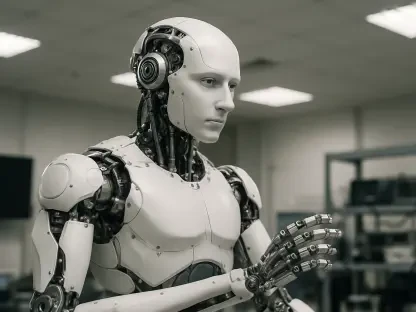Imagine a future where software engineers no longer toil over endless lines of intricate code but instead harness the power of artificial intelligence to streamline processes and foster innovation. This vision isn’t far off, as Cisco embarks on a transformative journey to integrate AI into its software development practices, signaling a significant shift in the tech industry’s landscape.
What Drives Cisco’s Bold AI Integration in Software Development?
What if traditional coding became obsolete, replaced by AI-enhanced methodologies that turbocharge productivity? This is the question Cisco is posing as it boldly integrates AI into its software development processes. By embracing this change, the company aims to dramatically alter the coding paradigm with implications that could ripple across the entire tech industry.
The Urgency of Adaptation: Why It Matters
As technology evolves at a breakneck pace, companies must adapt or risk falling behind in an increasingly competitive global market. Integrating AI not only offers a leap in productivity but also bridges skill gaps in the tech workforce. With economic pressures mounting, AI emerges as a critical tool for maintaining and elevating industry standards while efficiently managing resources and talent.
Revolutionizing Programming: From Syntax to Orchestration
Cisco’s new approach to programming seeks to cut code writing efforts in half. This transformation is driven by OpenAI’s Codex, a tool enabling engineers to redirect their focus from syntax-based tasks to higher-order orchestration. By alleviating the cognitive load, Codex empowers engineers to concentrate on innovating and problem-solving. Successful AI-driven projects within Cisco are already demonstrating increased efficiency and creative solutions, underscoring the power of AI to revolutionize the field.
Perspectives and Insights: Voices Behind the AI Shift
Jeetu Patel, president of Cisco, articulates a clear vision for the company’s future: investing in AI’s potential to reduce manual coding and enhance engineering innovation. Meanwhile, OpenAI board member Kevin Weil suggests that within the coming years, traditional coding may become largely obsolete. This shift marks a broader trend within the tech industry toward leveraging AI for heightened productivity, highlighting a move toward more intuitive and strategic software development.
Practical Strategies for AI-Driven Development
To effectively implement AI tools, organizations must thoughtfully integrate them into existing workflows. A step-by-step approach is vital, starting with pilot projects to gauge AI’s impact and refine processes accordingly. Companies should anticipate challenges like resistance to change or a steep learning curve, offering targeted training and support to smooth the transition. Despite potential hurdles, adapting to AI-enhanced environments promises a future of unparalleled possibilities in productivity and innovation.
Examining Cisco’s pioneering strategy illuminates a profound shift in the coding world. By harnessing AI, the company has redefined traditional roles and expanded the possibilities for software development. The journey forward requires a delicate balance between innovation and adaptation, promising a future where AI serves as a catalyst for creativity and efficiency in technology-driven enterprises.









